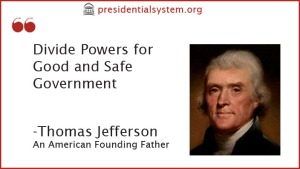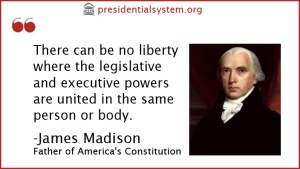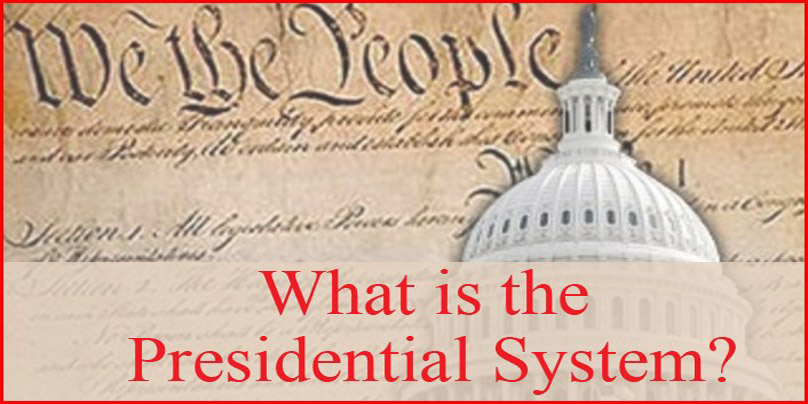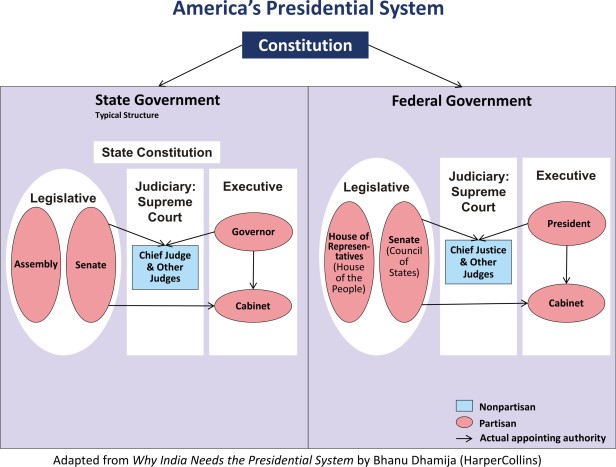The presidential system is a form of government in which the president is the chief executive and is elected directly by the people. In this system all three branches – executive, legislative, and judiciary – are constitutionally independent of each other, and no branch can dismiss or dissolve any other. The president is responsible for enforcing laws, the legislature for making them, and the courts for judging. Each is given specific powers to check and balance the others.
This system was invented by America’s founders to provide an alternative to the parliamentary form of government. It became known as ‘presidential’ because a directly elected president was its most salient difference. This doesn’t mean that the president holds supremacy like the prime minister or parliament. In fact, power in the presidential system is divided among many, so no individual or institution can ever become supreme.

This rejection of legislative supremacy is not the only fundamental difference. Since the presidential system was designed for a full republic, not a constitutional monarchy, it doesn’t have a head of state. The government is not just an executive committee called the Cabinet, it’s all three branches. The President, Congress (with two chambers: House of Representatives and Senate) and Supreme Court, work together to constitute a government, and all report directly to the people. Elections are therefore held more frequently than the parliamentary system; every two years for the legislature, and every four for the presidency. The president and legislators are elected for fixed terms. The judges are appointed for life, jointly by the president, who nominates, and the Senate, which approves.

Total executive responsibility is assigned to the president as an individual, not collectively to a council of ministers, as in the parliamentary system. The president’s cabinet is not made of legislators but of any individuals considered able by the president and approved by the Senate. In fact, legislators are barred from holding executive offices, and vice versa. Conversely, the president cannot make laws. He can veto, but the legislature can override if there is broad consensus.

Another big difference is with respect to state governments. The presidential system is designed for a federation, not for running states from the center. Accordingly, its state governments are independent, cannot be dissolved, and are required to be self sufficient. Federal and state governments are granted separate and specific powers; residual powers are left with the states.
The Americans invented the presidential system in 1787 to replace their decade-old fraying structure. After gaining independence, the 13 American colonies lived under the Articles of Confederation. But that provided a weak central government and lacked a fair system for inter-state cooperation. The union began to fall apart. The founders knew they had to come up with a better system. Having lived under the British Constitution all their lives, they knew the parliamentary form of government was not the answer.
They devised a revolutionary new system of strong but non-oppressive governments. The presidential system grants limited powers, empowers state governments, separates the three branches into different institutions, enables the minority to make laws, grants judiciary the power of review, and above all, gives the people a direct say. Direct elections at all levels of government – federal, state, and local – is this system’s best known feature.
Many nations have a so-called presidential system, but America is the model to study. In almost all other countries the powers are not as well balanced. The American system is not difficult to understand or replicate, however it cannot be implemented piecemeal. Since it relies on institutions and their checks on each other, the structure of every institution is equally important.
The American presidential system is not authoritarian. The general depiction of America’s president as “the most powerful man on the planet” has created an erroneous impression of autocracy. But nothing could be farther from the truth. In 225 years, no American president has even been accused of autocratic behavior. Power in this system cannot find a focal point. This system makes it structurally impossible, due to its powerful state governments, division of spending and taxing authorities, and separation of the powers of sword and purse.
-Bhanu Dhamija
Follow @BhanuDhamija

